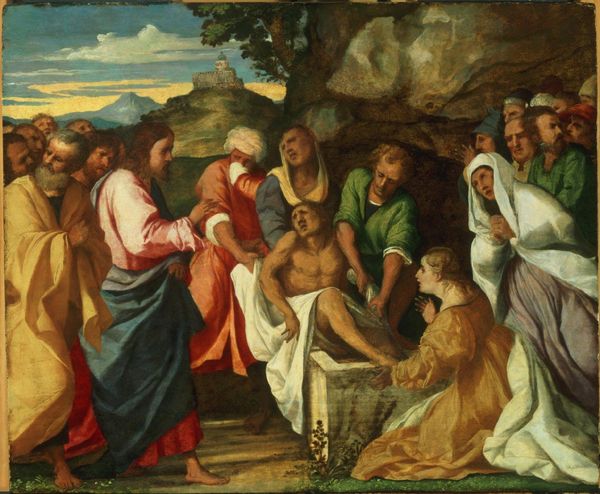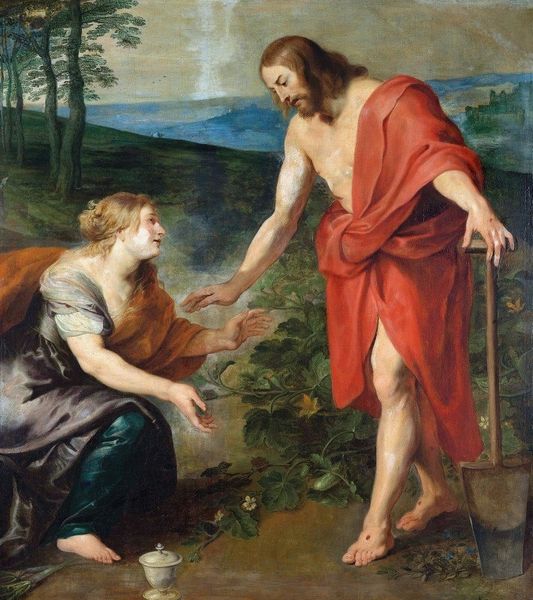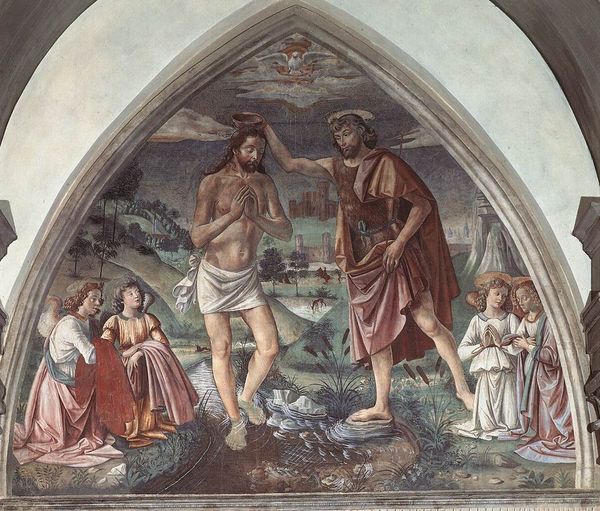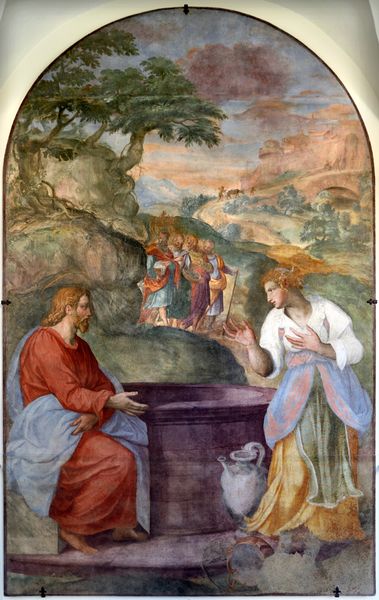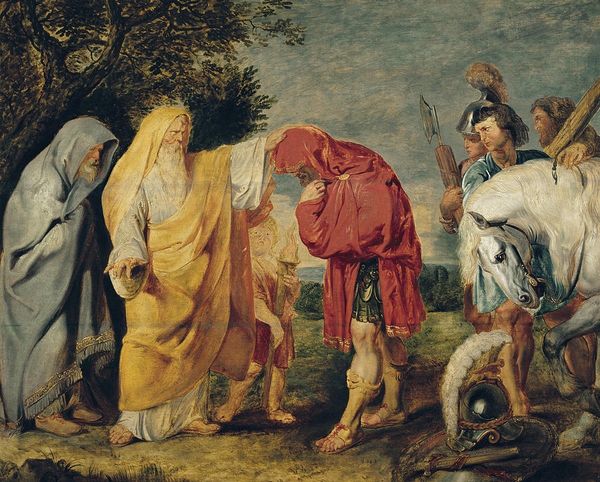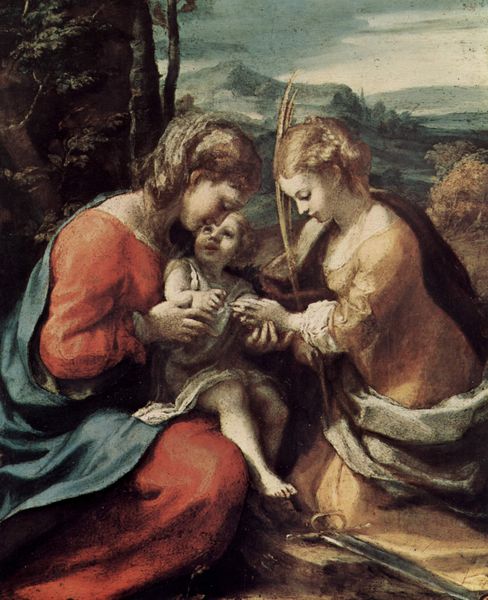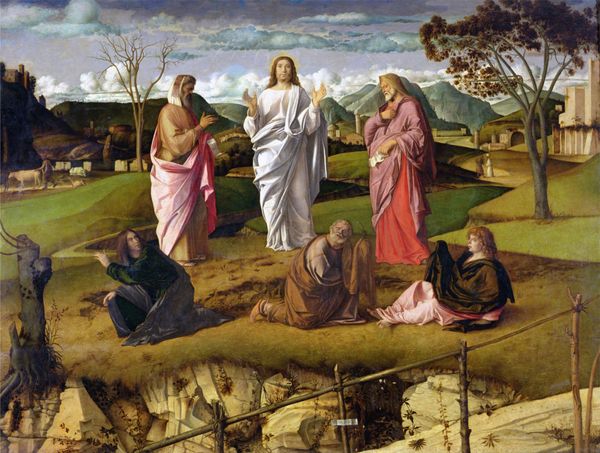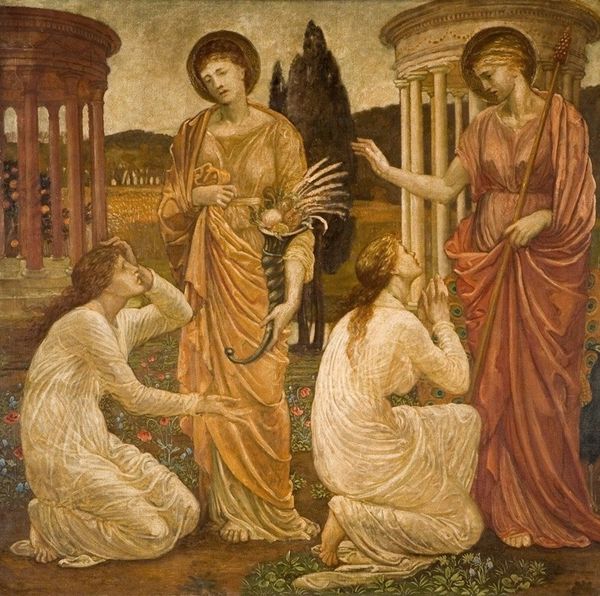
Dimensions: support: 410 x 498 mm frame: 565 x 657 x 50 mm
Copyright: NaN
Curator: Here we have George Richmond’s "Christ and the Woman of Samaria," currently held at the Tate. Editor: It’s striking how Richmond presents this scene; the woman seems lost in thought, almost melancholic. Curator: Indeed. Richmond seems to emphasize the social disruption inherent in this encounter. He painted during a period of significant social and religious upheaval, and there was much debate about the role of women and how scripture was interpreted. Editor: The well itself—the literal wellspring—becomes a potent symbol, representing spiritual nourishment and the breaking down of social barriers. The woman's downcast eyes and languid posture suggest an interior transformation, a profound encounter with the divine. Curator: I agree. Richmond presents us not just with a biblical scene, but with a lens into Victorian anxieties about faith and social change. Editor: Richmond prompts us to reconsider the weight of symbolic encounters in shaping individual and collective identities.
Comments
tate 7 months ago
⋮
http://www.tate.org.uk/art/artworks/richmond-christ-and-the-woman-of-samaria-n01492
Join the conversation
Join millions of artists and users on Artera today and experience the ultimate creative platform.
tate 7 months ago
⋮
Jesus uses his meeting with the Samaritan woman to explain his mission on earth: whoever drinks from the well ‘shall thirst again... but the water that I shall give him shall be … water springing up into everlasting life.’ Richmond used the same blend of gums (Arabic and tragacanth) as Blake used in his temperas. He mixed and blended colours, and produced far more gradations of blue and green than Blake, though with a very similar selection of pigments. Tempera remained an unusual medium among artists for many years after Blake’s death. Gallery label, August 2004
